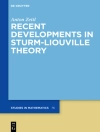Customer-Oriented Optimization in Public Transportation develops models, results and algorithms for optimizing public transportation from a customer-oriented point of view. The methods used are based on graph-theoretic approaches and integer programming. The specific topics are all motivated by real-world examples which occurred in practical projects. An appendix summarizes some of the basics of optimization needed to interpret the material in the book.
In detail, the topics the book covers in its three parts are as follows:
1. Stop location. Does it make sense to open new stations along existing bus or railway lines? If yes, in which locations? The problem is modeled as a continuous covering problem. To solve it the author develops a finite dominating set and shows that efficient methods are possible if the special structure of the covering matrix is used.
2. Delay management. Should a train wait for delayed feeder trains or should it depart in time? The author builds up two different integer programming models and a model based on project planning methods. Properties and solution methods are developed.
3. Tariff planning. Part 3 deals with the design of zone tariff systems, in which the fare is determined by the number of zones used by the passengers. The author presents a model for this problem and approaches based on clustering theory.
قائمة المحتويات
Customer-oriented Traffic Planning.- Customer-oriented Traffic Planning.- Stop Location.- Covering All Demand Points.- Bicriteria Stop Location.- Extensions.- Delay Management.- Delay Management With Fixed Connections.- Minimizing the Sum of All Delays.- The Bicriteria Delay Management Problem.- Extensions.- Tariff Planning.- Finding Zones and Zone Prices.












